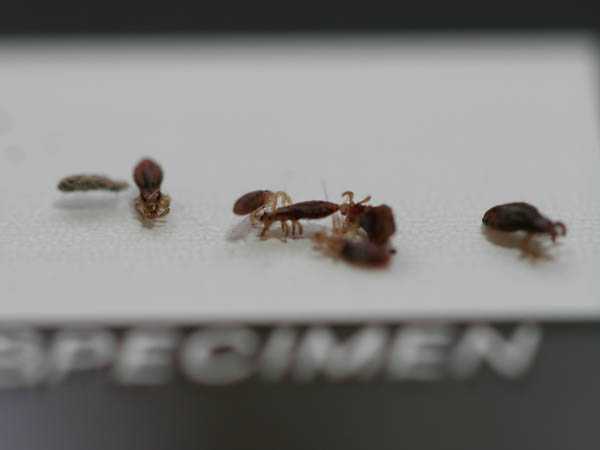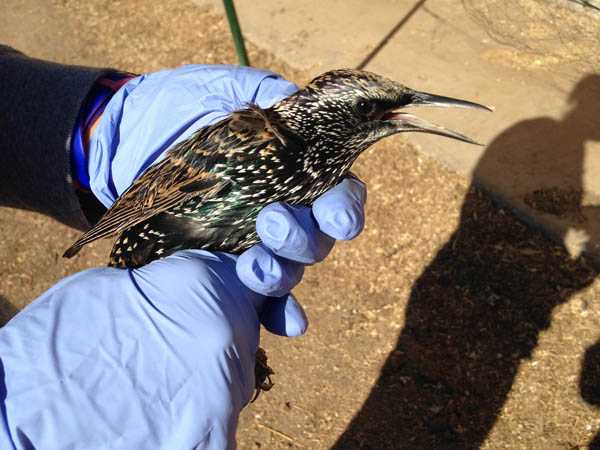Detecting Threats, Protecting People
CDC Disease Detectives Tackle Challenging Investigations
The U.S. Centers for Disease Control and Prevention (CDC) will hold its 65th Annual Epidemic Intelligence Service (EIS) conference May 2-5, 2016 in Atlanta. The event showcases recent ground-breaking and often times life-saving investigations by CDC EIS officers, also known as disease detectives.
EIS officers will share details of investigations that placed them in the thick of some of the world’s most challenging public health events. Monday through Thursday, CDC’s EIS officers will present their research findings from U.S. and international-based investigations conducted over the past year. CDC Director Tom Frieden, M.D., M.P.H., will open the conference with remarks on Monday morning and attend several sessions throughout the week.
During the past year, EIS officers contributed to controlling the international Ebola outbreak while implementing a simultaneous response to a new emerging challenge of Zika virus transmission. Featured presentations on the conference agenda demonstrate the wide range of public health activities that EIS officers are involved in at CDC.
Contact Information
CDC Media Relations
(404) 639-3286
media@cdc.gov
Spokespersons
Joshua A. Mott, PhD, MA, EMT-P (CAPT, USPHS)
“CDC’s EIS officers continue to apply ‘tried and true’ epidemiologic methods to protect our national, and indeed global, populations on a routine basis while simultaneously surging to meet emerging threats in this evolving modern context.”
“The EIS program also joined the first group of global Field Epidemiology Training Programs to be accredited by the Training Programs in Epidemiology and Public Health Interventions Network (TEPHINET) this year. This places us in the position to share best practices with our global partners.”
Joshua A. Mott, PhD, MA, EMT-P (CAPT, USPHS) – Chief – Epidemiology Workforce Branch (EWB) and Epidemic Intelligence Service (EIS) Program
Related Links
Mycoplasma hominis Surgical Site Infections Following Receipt of Amniotic Tissue Product—Ohio, 2015
CDC investigated a cluster of surgical site infections in Ohio in October 2015. All patients had received an amniotic tissue product from the same donor; investigators found that 27 vials of product from this donor were distributed to 7 states. Of the 9 Ohio patients who received it, 2 developed infections with M. hominis. Amniotic tissue, obtained from the innermost layer of the placenta, is used in wound management – but this CDC investigation demonstrates that the product may not be free of contamination by microorganisms and may result in disease transmission.
Guillain-Barré Syndrome Outbreak – Bahia State, Brazil, 2016
CDC Zika investigators identified a clustering of Guillain-Barré Syndrome (GBS) cases in the Salvador area of Brazil. The location and timing of the GBS outbreak coincided with the introduction and spread of Zika virus in Brazil, suggesting a possible link.
Restaurant-Associated Typhoid Fever Outbreak Traced to a Chronic Carrier – Colorado, 2015 Colorado and CDC traced three non-travel associated cases of typhoid fever in Colorado in 2015 to a chronic typhoid carrier: a restaurant worker who’d been carrying the pathogen since 2000.
Firearm Mortality – Clark County, Nevada, 2009-2013
An investigation into the demographics of over 1,300 firearm-related deaths in the county found that 84% were male, 70% were suicides, and 27% were homicides. The county’s firearm suicide rate was higher than the 10 largest U.S. counties by population.
Increased Cases of Syphilis Among Pregnant Women and Infants — United States, 2012–2014
National data show a 25% increase in syphilis cases among pregnant women from 2012 to 2014 and in 2014, nearly 1 in 5 women with syphilis were pregnant. There was also a 37% increase in infants born with syphilis and a 67% increase in syphilis-related stillbirths during 2012–2014, although the overall number of syphilitic stillbirths was small. While non-Hispanic blacks made up nearly half of all syphilis cases among pregnant women in 2014, during 2012–2014, the biggest increases occurred among American Indians/Alaska Natives (200%) and non-Hispanic whites (47%).
Zika Virus Disease in Returning U.S. Travelers – 2010-2016
Before the current Zika outbreak in the Caribbean became big news, CDC researchers identified 11 travel-related cases of Zika among travelers returning to the U.S. from visits to Pacific Islands.
5-Year Relative Survival with HPV-Associated Cancers
Analysis of a massive amount of data from cancer registries – covering about 60% of the U.S. population with follow-up from 2001 to 2011 – determined survival rates for various types of HPV-related cancer: 64.2% for cervical, 65.9% for anal, 66.0% for vulvar, 52.8% for vaginal, 47.4% for penile, 56.25 for rectal, and 51.2% for oropharyngeal cancers. There were large racial disparities in survival.
Prevalence of Failure to Floss among Adults – U.S. 2009-2012
Do you floss every day? You should – but you’re not alone. Nearly a third of American adults never floss, and only about 30% told CDC researchers they flossed every day in the last week. Failure to floss is more common in some groups than in others.
Emergency Department Visits for Cannabis-Related Events – Oregon, March-October 2015
Since Oregon voters approved marijuana for recreational use after July 2015, visits to the state’s 60 emergency departments for cannabis-related events increased. CDC researchers categorized these events, and the people who experienced them.
Breaking Bad: Methamphetamine Overdose Deaths – New Mexico, 2014
It’s not just a television series. In 2014 New Mexico ranked first nationally for methamphetamine-related deaths (MODs). The state’s MOD rate quadrupled from 2011 to 2014. To investigate this trend, CDC and NMDOH epidemiologists analyzed New Mexico drug overdose and toxicology data for 2014, when meth caused 111 of the state’s 540 overdose deaths. More than two-thirds were men, approximately half were over the age of 40 years, and most lived in New Mexico’s major population center.
Getting Too Close to Wildlife: Risk Factors Associated with Injury from Bison Encounters – Yellowstone National Park, 2000-2015
Bison are wild animals that freely roam throughout Yellowstone National Park. People can be injured by approaching bison too closely. CDC and the National Park Service note that those injured by bison generally were within 9 feet of the animal; about half were taking photos. To protect humans and bison, the park’s required bison-viewing distance is 75 feet.
Severe Illness Associated with a Novel Synthetic Cannabinoid – Mississippi, April 2015
When a clinician at the University of Mississippi Medical Center in Jackson noticed an unusual number of patients seeking emergency care after using synthetic cannabinoids, CDC helped investigate. There were 721 cases and 9 deaths statewide; investigators took a closer look at 119 UMMC patient records, including 3 deaths. Lab analysis showed that 71 percent of the UMMC patients were positive for synthetic cannabinoids – and of these, 77 percent were positive for MAB-CHMINACA, a particularly potent synthetic cannabinoid. This outbreak, the investigators report, was “unprecedented in magnitude and severity.”
Village-Based Rat Fall Surveillance as an Early Warning System for Human Plague – Uganda, 2013-2015.
“Rat falls” are unusually large accumulations of rat carcasses. Plague is one possible cause of these rodent die-offs – and CDC researchers detected plague in 4 percent of carcasses in rat falls in participating Ugandan villages from July 2013 to October 2015.
Fatal Flea-Borne Typhus — Texas, 1985–2015
Flea-borne typhus isn’t common in the U.S., but the potentially severe disease still occurs. In Texas, 13 people died of flea-borne typhus from 1985-2015. Time to death usually was 12 days after symptom onset. A joint CDC-Texas DSHS study found that respiratory or neurologic manifestations are identified frequently in patients with flea-borne typhus, and that this disease should be considered in patients with multisystem organ failure in regions where the disease is endemic — even if they don’t report flea bites, which often go unrecognized.
Foodborne Outbreaks in Prisons – United States, 1998-2014
The United States has the largest prison population in the world. A CDC review of the 200 foodborne outbreaks reported in prisons from 1998 to 2014 showed that: Florida and California reported the most outbreaks; Clostridium, Salmonella, and norovirus were the most frequent causes; and, poultry, vegetables, and meat were the most commonly implicated foods. In 2014, about 1 in every 3,000 inmates suffered a foodborne-outbreak related illness compared with 1 in every 25,000 other people.
Nontuberculous Mycobacterium Respiratory Infections – Florida, 2014
Nontuberculous mycobacteria (NTM) are common in the environment and may cause respiratory disease. NTM respiratory infections are reportedly more common in Florida than other states, spurring an investigation. Data from the Florida Bureau of Public Health Laboratories provides support for a substantial number of NTM respiratory infections in Florida. About 80 percent of those with evidence for NTM respiratory infections occurred in people age 50 and older and over a quarter of those were age 70 to 79.
Invasive Nontuberculous Mycobacteria Infections among Cardiothoracic Surgery Patients – Hospital A, Pennsylvania, 2010-2015
Heater-cooler units used to regulate body temperature during open heart surgery may have exposed some 1300 patients to nontuberculous mycobacteria (NTM) infections at a Pennsylvania hospital, CDC investigators found. The disease detectives had been called in to find out the source of these infections in a cluster of patients. The findings are the first in the U.S. to suggest that NTM aerosolization by these devices might cause invasive infections.
Violent Death among the Homeless – National Violent Death Reporting System, 17 States, 2005-2013.
CDC researchers investigated the characteristics and circumstances precipitating violent death among the homeless using data from 17 states. Homeless homicide and suicide decedents were more likely to have alcohol and substance use problems than non-homeless decedents; results suggest the need to target substance use problems in this vulnerable population.
Reported Cluster of Neuralgic Amyotrophy – North Carolina, May-September 2015
Neuralgic amyotrophy is a rare condition involving pain and weakness of the neck or arm. In August 2015, an increase in neuralgic amyotrophy diagnoses was reported from a single medical practice in North Carolina. A thorough investigation found that only four of the 12 reported patients met a standard case definition; no common preceding events were identified. No other NC hospitals reported an increase in the diagnosis during the same period. Collaboration between clinicians and public health is important to investigate clusters of unusual illness and identify potential ongoing risks.
Alaska Resident Infected with a Novel Species of Orthopoxvirus – Alaska, 2015
The smallpox vaccine protects against all kinds of orthopoxviruses – but since elimination of smallpox and the end of routine smallpox vaccination, orthopoxvirus infections have begun to pop up. In this case, CDC disease detectives isolated a never-before-seen member of this virus family from an Alaska resident living in a woodland setting in the Alaskan interior.
Enterovirus-D68 and Acute Flaccid Myelitis among Children: A Case-Control Study in Colorado, 2014
From August through October 2014, there was in increase in cases of acute flaccid myelitis (AFM) in U.S. children. Around the same time, there was a nationwide outbreak of enterovirus D-68 respiratory disease. Colorado reported the most AFM cases; CDC investigated by comparing AFM cases to children who had nasopharygeal samples taken during outpatient visits for respiratory illness. 4 of 11 (36%) of kids with AFM were positive for EVD-68, compared to 6 of 105 (6%) of controls. The findings support a possible link between EVD-68 and AFM.
- Page last reviewed: May 2, 2016
- Page last updated: May 2, 2016
- Content source:



 ShareCompartir
ShareCompartir






